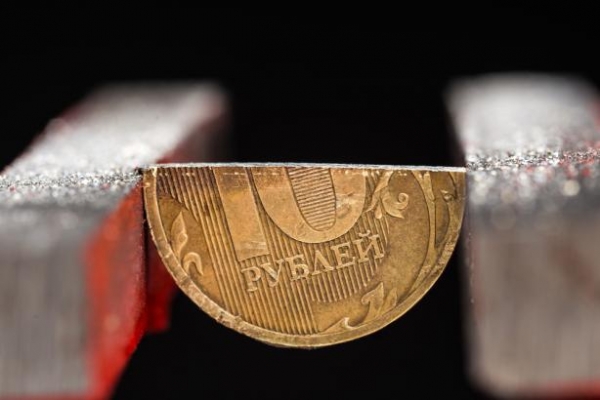Author Andrey Degtev — expert of the Center of the slain.
During the crisis, the incomes of Russians are falling. Salaries are mostly not indexed, and inflation eats up their buying power. However, sometimes you can hear the arguments in favor of the fact that there is nothing wrong in such a situation there. They say that if salaries fall, hence reduced costs. And coupled with a devaluation is generally to increase the competitiveness of domestic producers. The Ministry of economic development and is seen in the stagnation of wages source of growth. The MAYOR is confident that the saving on salaries, businesses would increase investment, which subsequently would raise the salary to compensate for the previous losses. However, what is actually the role of wages in economic development?
<hr/>
“IRON” ECONOMIC LAW?
For a long time, we insist that wages must not grow faster than productivity. At first glance, such logic is correct. For a technological breakthrough is necessary to concentrate all resources on the main goal of the investment. Take, for China. In this rapidly developing country where the ratio of investment to GDP is about 42%, the share of public expenditure in the economy is only about 25%. For comparison, in Russia’s budget spending is equal to approximately 36% of GDP, and in USA — over 50% (including social insurance funds). In other words, resources in China focused on investment and not sprayed on other components, including social needs.
However, consideration of the dynamics of the considered indicators gives a different picture. China has demonstrated the ability to develop in conditions of faster growth of wages compared to labor productivity. For example, in 1985-1995 salary increased 4.76 times, and productivity — 4.22 times. China is not alone in this. A faster growth of wages during the industrial breakthrough of the 30-ies in the USSR. In periods of development wages outstripped productivity in our country. As soon as performance began to dramatically outpace the growth of wages, in contrast, was a revolution. So it was before 1917, and in the late 1980s.
The analysis shows that in the history (1950-2006). a number of countries (Netherlands, Belgium, Italy, Germany, England, France, USA) periods of rapid productivity growth also alternated with periods of advancing growth of wages. From this it becomes obvious that there is no absolute for all occasions and times of “economic law” of excess productivity growth relative to wages does not exist.
<hr/>
ZARPLATOMER ACTUAL AND TARGET
Based on the above facts, one could argue that the Russian economy can be modernized in terms of faster growth of wages over labour productivity. This thesis encounters a number of objections from the opponents. It is alleged that zarplatomer Russian economy, and so comparable with developed countries (Fig. 1).

Fig. 1. The share of wages in gross value added of individual countries, according to ILO
In addition, the low level of wages in Russia due to a lag in productivity. If you compare the difference in salaries between Russia and developed countries (PPP), it will be comparable to the difference in productivity (Fig. 2).

Fig. 2. The ratio of productivity and wages in Russia to similar indicators in selected countries, according to ILO and the world Bank
However, when considering the additional circumstances, it becomes clear that the requirement of faster growth of wage is justified.
First, the salary in Russia is low and does not allow the employee to live at the level of world standards of quality of life. Salary in Russia is 2-3 times lower than in developed countries, if compared on a purchasing power parity (PPP), and 3-6 times lower when compared at the official exchange rate (Fig. 3-4).

Fig. 3. The average salary in certain countries at PPP (in brackets-period for which the data), according to the ILO and the world Bank

Fig. 4. The average salary in selected countries of the world at the official exchange rate (in brackets-period for which the data), according to the ILO and the world Bank
Secondly, Russia clearly has the potential redistribution of salary resources for the benefit of the toiling majority. Our country has a fairly high level of social stratification. The decile coefficient (the ratio of income of the richest 10% to poorest 10%) is about 14 (Fig. 5).

Fig. 5. The decile ratio in the world, according to the world Bank
This means that average wages do not reflect the real income of most wage earners. In the average fall and meager wages of workers, and very high salaries of top managers. If you limit the rampant consumption of the top, it would be possible to increase the salaries of ordinary workers even without increasing zarplatomer GDP, by mere redistribution.
Thirdly, we should find out, and what should be the optimal share of wages in GDP in Russia. This ratio is identified and is 64%. Thus, the currently available figure is 52% (including hidden pay) is less than the target. This means that the cost of salaries not only can, but should be increased at a faster rate than productivity. And it does not mean the critical decline in profitability and the competitiveness of enterprises. In the case of innovatisation of production costs can be reduced despite the increase in wages, as a result of improved technology and reduction in other production costs.
In General it can be noted that the supposedly “iron clad” rule timing of productivity over wage is an exaggeration, and in reality can be broken. The share of wages in Russian GDP must be increased.








